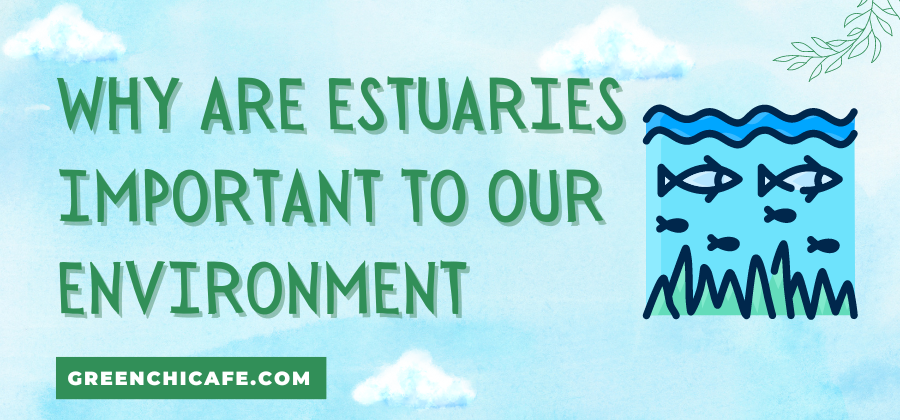Estuaries provide critical habitats, protect shores from storms, filter runoff, and benefit both marine and land organisms, highlighting their immense environmental value.
Understanding estuary ecosystems is key to conservation efforts.
But these delicate habitats face serious threats that require urgent attention. Appreciating why estuaries matter can inspire the action needed to protect them.
Why Are Estuaries Important to Our Environment?

Estuaries are critically important to the environment because they provide sheltered, nutrient-rich aquatic habitats that support diverse marine and land life.
Estuaries also protect coastlines from erosion and storms while filtering water and processing nutrients from terrestrial runoff.
Key Points
- Estuaries offer prime breeding and feeding grounds for commercial fish and shellfish.
- Coastal wetlands in estuaries absorb storm surges and reduce wave impacts.
- Estuaries filter and process pollutants and nutrients from rivers before they reach the sea.
Do Estuaries Provide Shelter and Food For Marine Life?

Yes, the sheltered, nutrient-rich waters of estuaries offer prime nursery areas for many commercial and recreationally valuable fish and shellfish to breed, feed, and mature.
Estuaries are vital to marine food webs.
How Do Estuaries Benefit Land Animals and Plants?
Many birds, mammals, and reptiles rely on estuary habitats for shelter, food, and nesting.
Estuaries also support diverse plant life that stabilizes shorelines from erosion.
Can Estuaries Protect Coastlines From Storms?
Absolutely.
Coastal wetlands buffer adjacent uplands from wind, waves, and floods by absorbing and slowing these forces before they impact shores.
This reduces storm damage.
Do Estuaries Filter and Process Nutrients?
Yes, estuaries are like the ocean’s kidneys – they filter sediment and pollutants from rivers and help process massive amounts of nutrients flowing downstream.
This improves water quality.
Why Are Estuaries At Risk Presently?
Development, habitat loss, pollution, climate change, invasive species, and overharvesting all imperil estuary health.
Approximately half of the original estuary acreage in the U.S. has been destroyed to date.
How Can We Better Protect and Restore Estuaries?
Everyone has a responsibility to care for and protect the environment.
Stricter regulation on development, curbing pollution and runoff, enforcing sustainable fishing limits, removing invasive species, and actively replanting marshland can all help revitalize ailing estuaries if acted upon urgently.
How Do Estuaries Support Life?
Estuaries provide critical aquatic habitats that support an abundance of marine and land organisms.
Their sheltered, nutrient-rich waters offer ideal breeding and nursery areas for over 75% of commercial fish species to spawn and mature.
Estuaries provide food, migration stopovers, and shelter for numerous birds, mammals, and reptiles.
Diverse vegetation like mangroves and marsh grasses stabilize estuary shorelines and sequester carbon.
The mosaic of habitats promotes biological diversity from microscopic algae to large vertebrates.
By sustaining biodiversity and food webs, estuaries propagate life across interconnected ecosystems well beyond their borders.
Protecting these delicate nurseries is vital for ecological and economic continuity.
Why Is The Estuary Important?
Estuaries are immensely important for both environmental and economic reasons.
Estuaries provide spawning, nursery, and feeding grounds that support productive fisheries, sustaining livelihoods, and nutrition.
Their coastal wetlands buffer storms and erosion that threaten property.
Estuaries filter sediment and pollutants from rivers, benefiting water quality. discontinued if estuaries are compromised.
Public health and sustainable development rely on properly functioning estuary ecosystems.
What Would Happen If Estuaries Disappeared?
The loss of estuaries would devastate marine fisheries, removing vital nursery areas.
Flooding and erosion would increase, degrading shoreline habitats and threatening property.
Pollutants would concentrate in oceans degrading water quality.
Migratory birds would lose stopovers.
Carbon sequestration by coastal vegetation would decline.
Nutrient cycling between land and sea would also be disrupted.
The diverse benefits estuaries provide clearly illustrate the interconnected nature of ecosystems and human well-being.
Preserving estuaries preserves life.
Key Takeaway:
- Estuaries provide services vital to ecological, economic, and public health – but require proactive conservation to survive intensifying human impacts.
FAQ
How Do Humans Utilize Estuaries?
Estuaries provide resources for fishing, shellfish harvesting, recreation, and transportation while supporting communities through tourism. Many cities are built near estuary habitats.
What Is Eutrophication in Estuaries?
Excess fertilizers in runoff create algal blooms that deplete oxygen and threaten estuary life in a process called eutrophication. This must be addressed.
How Do Estuaries Form?
Estuaries form where rivers meet oceans. Fresh water mixes with and dilutes saltwater creating gradients and unique bioregions ideal for diverse life.
At GreenChiCafe, we are passionate about our beautiful planet and protecting nature.
Please check our website for more environmental articles.
